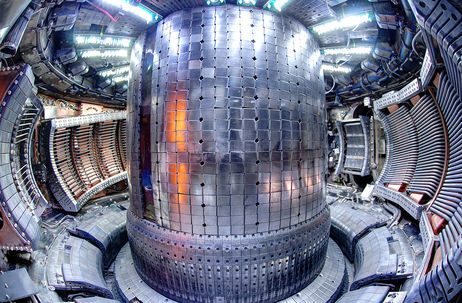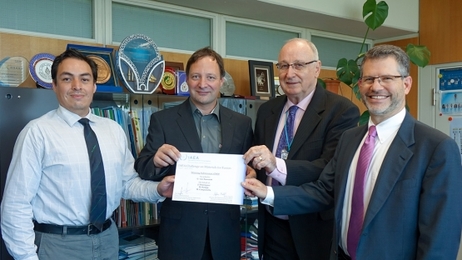Big Data Solutions to Improve Fusion Reaction Simulations
Published Mar-15-20Breakthrough:
Novel software solutions to help scientists better understand how fusion reactor materials respond to high-energy events.
Company:
Max Planck Institute of Plasma Physics and the Max Planck Computing and Data Facility, Germany
The Story:
 The lofty promise of nuclear fusion is limitless energy with hardly any waste at all. To some, this is the holy grail of energy, a proposed form of power generation that creates electricity by using the heat from nuclear fusion reactions. This is the type of reaction that powers the sun when lighter atomic nuclei combine to form a heavier nucleus in a process that generates heat.
The lofty promise of nuclear fusion is limitless energy with hardly any waste at all. To some, this is the holy grail of energy, a proposed form of power generation that creates electricity by using the heat from nuclear fusion reactions. This is the type of reaction that powers the sun when lighter atomic nuclei combine to form a heavier nucleus in a process that generates heat. All around the world, scientists and engineers are trying to master nuclear fusion. However, before we can tap into an unlimited supply of cheap and clean, carbon-free energy, numerous technical obstacles have to be overcome. Among the many challenges involved in harnessing commercially-viable fusion is being able to protect the wall and other components of the reactor vessel from high temperatures and high-energy particles.
"Obtaining a very high temperature in a reactor is one of the required conditions for fusion to take place," said Christian Hill, Head of the Atomic and Molecular Data Unit at the International Atomic Energy Agency (IAEA).
"At such high temperatures – ten times higher than at the core of our Sun – matter exists only as plasma, which must be confined by a magnetic field to keep it from damaging the reactor walls."
Open Innovation Approach
To bring new thinking to bear on this problem, the IAEA decided to host an open innovation competition, inviting scientists to invent novel ways to use data to visualize, analyze and explore simulations of possible materials for fusion reactors.
The purpose of the open innovation initiative was to give fusion scientists a better idea of how materials respond to high-energy events.
Participants were tasked with analyzing simulations and coming up with software solutions to help scientists better understand how materials respond to high-energy events. The nature of the solutions was left up to the teams but among those that could be considered were new software for visualizing material damage and algorithms to depict and summarize the statistical distribution of atom displacements
Fourteen teams from ten countries submitted their analyses of simulations of the damage caused to a reactor wall by high-energy neutrons released by a fusion reaction.
Winning Solution
The winning team was comprised of scientists from the Max Planck Institute of Plasma Physics and the Max Planck Computing and Data Facility, Germany. They used an existing technique from machine learning and data science for the first time to identify defective structures in the simulated damaged crystals.
The winning approach had several advantages over existing methods. These included distinguishing genuine defects from tiny, short-lived distortions caused by the thermal movement of atoms and the automatic identification of unknown defects.
Turning Ideas Into Action
For their work, the team picked up 5,000 euros in prize money. Their algorithm speeds up the time-consuming task of defect identification and classification and could be used in the development of fusion plants such as DEMO (DEMOnstration Power Station). This is a proposed nuclear fusion power station that will be constructed once many of the problems with current fusion reactors have been solved.
Next Story »


